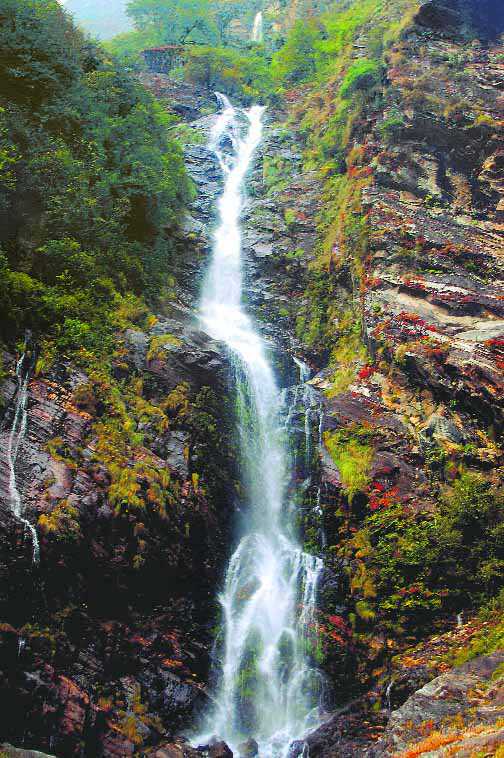Water crisis deepens as springs dry up
Ajay Ramola
Tribune News Service
Mussoorie, April 24
Ravi Belwal, a resident of Dhanaulti, is baffled at the discharge levels going down considerably from a natural spring situated at Chandu Ka Gadera that supplies water to Dhanaulti, near Mussoorie.
The other natural spring sources around Dhanaulti have vanished over the years, making it difficult for the Jal Sansthan to fulfil the overgrowing demand of the tourist town, as it gained popularity over the years.
A similar situation prevails in other parts of Garhwal. Magnificent waterfalls and springs have dried up to the despair of women who used to sit around them chatting and washing clothes.
A suvery on carrying capacity commissioned by the Supreme Court Monitoring Committee (SCMC) in 1998 had warned that Mussoorie was heading for a water crisis if the supply was not augmented soon, says SCMC member Hugh Gantzer.
The mushrooming of several concrete commercial establishments in Mussoorie has aggravated the problem, as water instead of seeping down into the soil flows off the surface, without recharging aquifers.
Eminent environmentalist from Mussoorie Vipin Kumar says, “In Mussoorie, we are facing one of the worst water crisis of the decade and its impact will be felt around May 15 during the peak tourist season. One can see 20 tankers every day supplying water from the Dhobighat spring as compared to 10 tankers last year. This is an alarming situation and with streams depleting further in May and June, we are heading for a water crisis which does not augur well for the tourist town.
Vipin says, “I had strongly resisted the idea of building pucca or concrete nullahs for draining rainwater. The British instead of building concrete structures left them as they were. This helped water to seep into the soil, thus charging and recharging aquifers and saving springs from drying up during the summer. However, that practice was stopped, leading to the present water crisis.
Gantzer says drains during the British period had bazri traps on the slopes. These were slightly elevated where bazri was trapped, holding rainwater until it percolated into the soil gradually. But at present, with construction of pucca nullahs, bazri flows down, leaving no room for water to seep into the soil.
The other major reason for depletion of water resources is the mushrooming of commercial establishments around 25 sq km of Mussoorie. Due to such constructions, rainwater has not been able to recharge aquifers and caused springs to dry up.
Gantzer says Mussoorie never had flats like we have now. This means increase in water consumption without augmenting its supply. He adds that it is imperative to harvest rainwater instead of just storing it even if we have concrete houses and flats. The Jal Sansthan has not laid down separate pipes for rainwater that could have been used for flushing and gardening.
Gantzer adds the Mussoorie Dehradun Development Authority has not been environment conscious and has failed to maintain a balance between development and environment, which is critical to check a water crisis.
Increased commercial activities at Dhanaulti have resulted in less water discharge from natural springs. According to Jal Sansthan officials, the water discharge level has come down from 40 million litres per minute to 17 million litres per minute, which is bad news for the tourist town as it gears up for the peak tourist season.









